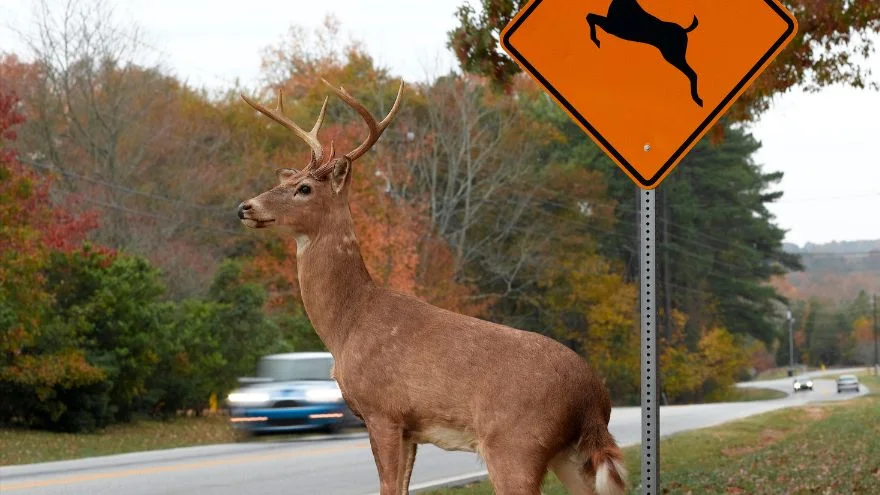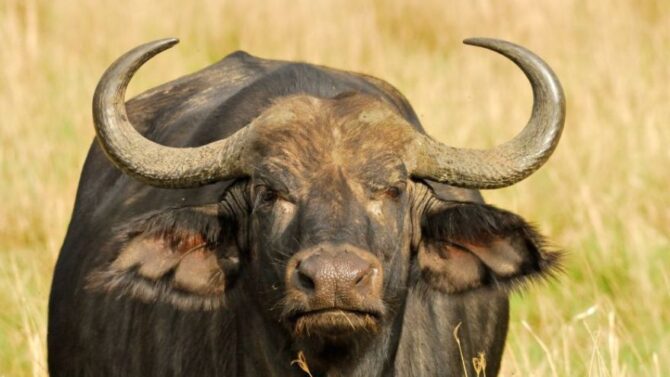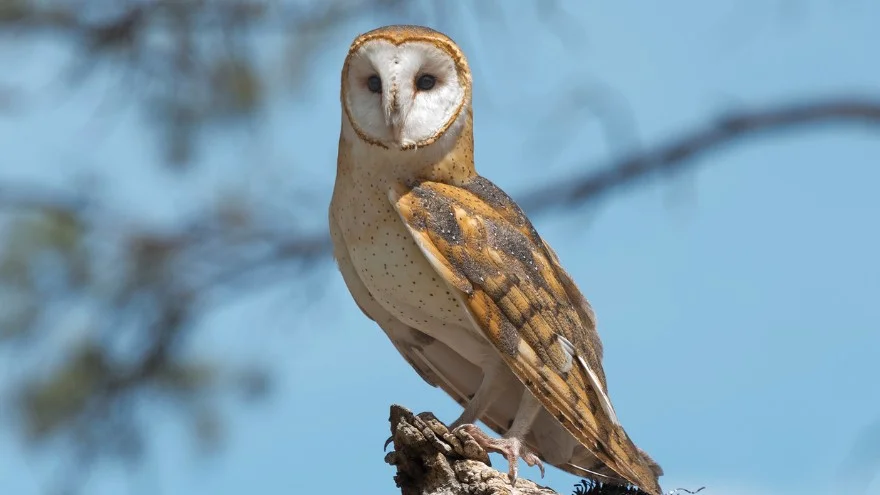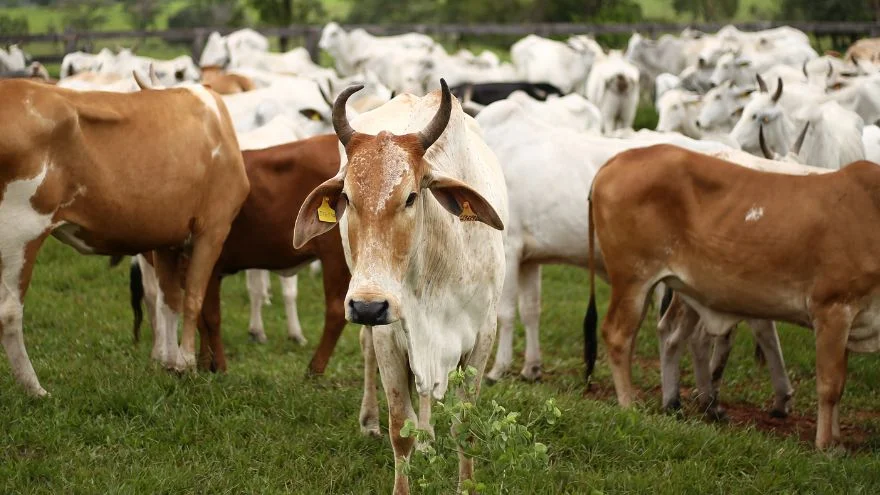The United Kingdom may not seem like the ideal place to spot dangerous creatures as it is not home to fierce-looking tigers and prowling safari lions.
However, this may not be the case as the United Kingdom has quite an unusual number of deadliest animals you need to be careful of because they can cause you a lot of pain.
This compilation of the most dangerous animals in the UK will serve as a guide through which you can know and identify some of these creatures to avoid an unpleasant conflict with them.
What are the Most Dangerous Animals in the UK?
1. Cows
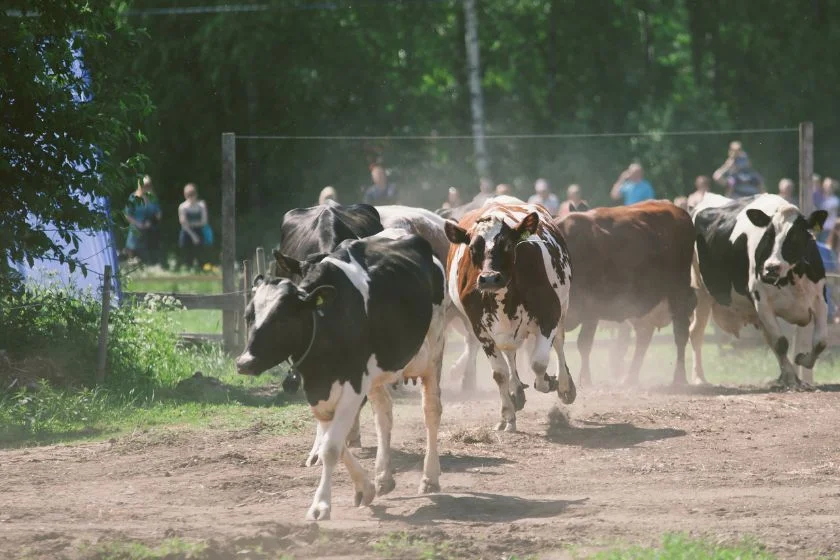
- Scientific name: Bos taurus
- Classification: mammal
- Habitat: Pastures
- Diet: Herbivore
- Conservation status: Not extinct
A cow is one unusual animal that may come as a surprise to most people as dangerous.
It has been argued that cows should take the lead as the most dangerous animal in the UK due to the statistics backing their aggression and attacks, one of which was a recent investigation by the Health Safety Executive (HSE).
The inquest showed that cattle killed 98 people in the UK between April 2000 and March 2020.
Among the casualties killed, 22 were farmers and farm workers, while the rest were random members of the public.
Cows can be aggressive as they’ve been known to charge, kick and even trample on humans, leading to severe injuries, deformity, or sometimes death.
These statistics are enough to place cows as one of the UK’s most dangerous animals, if not the most.
2. Noble False Widow Spider
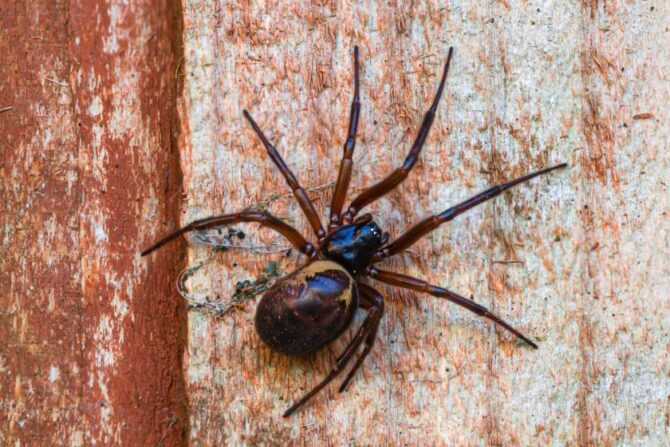
- Scientific name: Steatoda Nobilis
- Classification: Arachnid
- Habitat: Gardens, around houses
- Diet: Insects
- Conservation status: Least concern
The False Widow spider was named the British most venomous spider for a reason.
Like its counterpart, the black widow spider, it carries a toxin and serine-based venom capable of delivering immense pain when injected into a victim.
The pain is similar to that of a bee or wasp when bit, and symptoms, if not treated, can cause fever, tiredness, face flushing, and swelling at the site of contact.
However, while the false widow’s sting may not be more severe than that of a wasp or bee, there have been reports of extreme cases of fatal incidents.
3. Adders
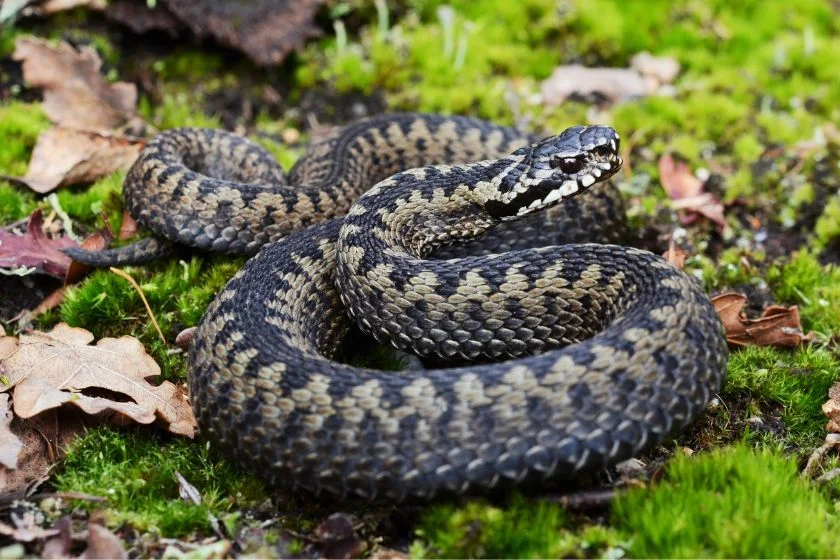
- Scientific name: Vipera berus
- Classification: Reptile
- Habitat: Open woodlands
- Diet: Carnivore
- Conservation status: Endangered
It might interest you that the UK is also home to dangerous snakes, one of which is the Adder or “European Adder,” as it is popularly called.
The Adder is of the viper family, which makes her UK’s most venomous snake since vipers possess deadly venom, and you can find them in Scotland, Wales, and England.
The Adder is so dangerous that not less than 100 incidents have been recorded yearly, with an estimated 14 fatality cases since the count began in the 19th century.
When bitten, the following symptoms can cause swelling, dizziness, nausea and vomiting, diarrhea, fainting, irregular heartbeat, and blood blisters in the affected area.
4. Deers

- Scientific name: Cervidae
- Classification: Mammal
- Habitat: Thick low-lying vegetation
- Diet: Herbivore
- Conservation status: Not extinct
Another unusual animal that will shock you to be on the list is the deer, probablyy because they are known to be timid, docile, and modest animals.
However, you may be surprised to know that these seemingly well-behaved animals are linked to between 40,000 to 74,000 traffic collisions and 20 road-related deaths annually in the UK.
5. Wild Boars
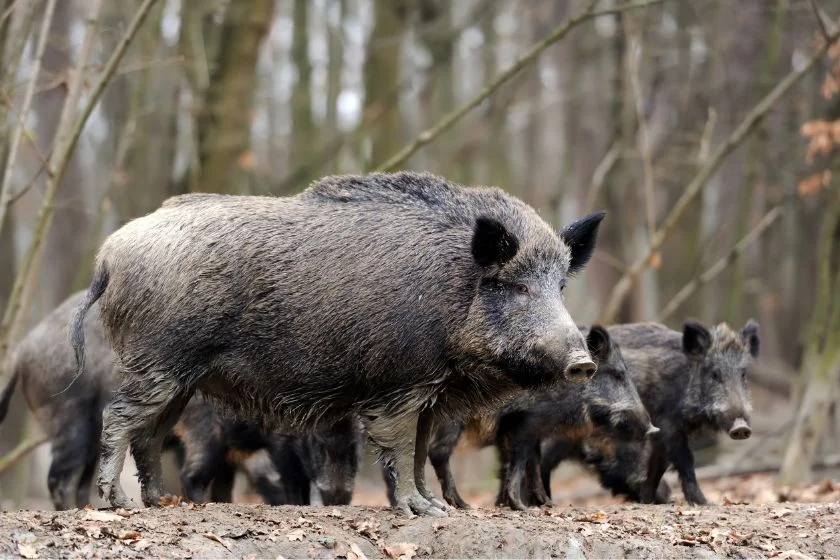
- Scientific name: Sus scrofa
- Classification: Mammal
- Habitat: Grassy savanna and wooded forests
- Diet: Omnivores
- Conservation status: Near threatened
As of the 17th century, wild boars were extinct in the UK, but over the past years, they have been re-introduced into the country.
The population of wild boars in the UK stands between 500 to 1000 wild boars.
Wild boars are quite reserved animals and don’t normally attack humans for food since they are omnivores. However, wild boars may attack dog owners if they feel threatened.
Wild boars, especially the ones guarding a group of piglets, tend to become defensive and aggressive when they come in contact with human beings or, even worse, people with dogs.
Over the years, there have been many reports of attacks on dog owners, so much so that it is easy to think that their ancestral experiences with wolves are the main cause of their aggression towards dogs.
6. Yellow-tailed Scorpion

- Scientific name: Euscorpius flavicaudis
- Classification: Arachnid
- Habitat: Desert, rainforests, grasslands
- Diet: Insects
- Conservation: Least concern
Yellow-tailed scorpions are a very special specie of scorpions found in England. Surprisingly, they rarely use their sting; instead, they prefer to hold and kill prey with their claws.
And for an animal with 4 pairs of legs, it is quite unusual that yellow-tailed scorpions don’t like to move around much. They prefer to hide in cracks and wait for prey to get into the killing range.
The yellow-tailed scorpion prefers warm climates, rarely seen in very cold climates or during the cold season.
The yellow-tailed scorpion doesn’t exactly have a deadly venom. However, it is ill-advised to pick one up.
A sting from a yellow-tailed scorpion could result in severe pain, and people with allergies are at higher risk of allergic reactions and even anaphylactic shock.
7. Weever fish
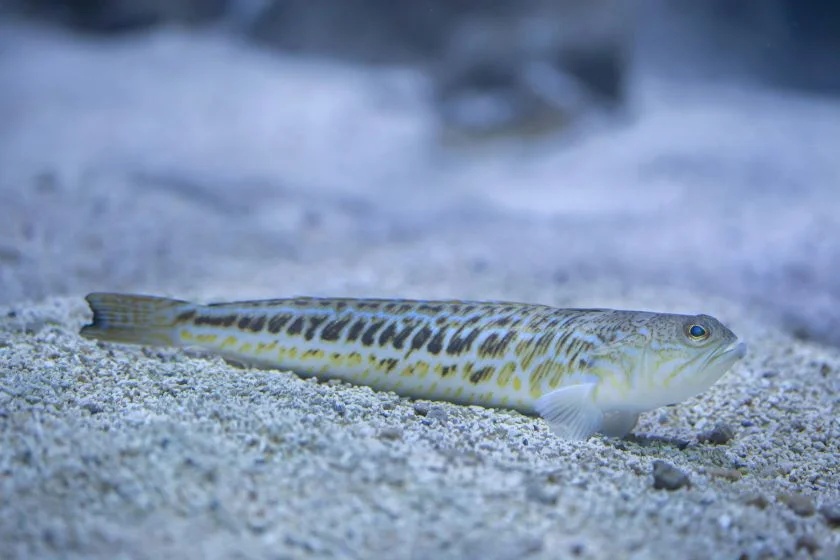
- Scientific name: Tachinidae
- Classification: Fish
- Habitat: Sandy sea beds
- Diet: Carnivore
- Conservation status: Least concern
Another interesting creature that found its name on the list is the Weever fish, one of the UK’s most poisonous fish.
This fish is armed with sharp spines with venom along its dorsal fin, which sticks out of the sand where it hides, making it impossible to detect.
The sad part is that when stepped upon, these sticking spines can inflict unimaginable agony on the unsuspecting victim, and the pain can last for hours.
Other symptoms include swelling of the limps and, in extreme cases, can lead to temporal paralysis.
Fatality cases can be extremely rare, although not completely ruled out, as respiratory failures have been reported after wounds may have been infected.
So, if you’re stung by the weever fish, your first line of action should be to get out of the water and seek medical care immediately.
8. Portuguese Man O’ War
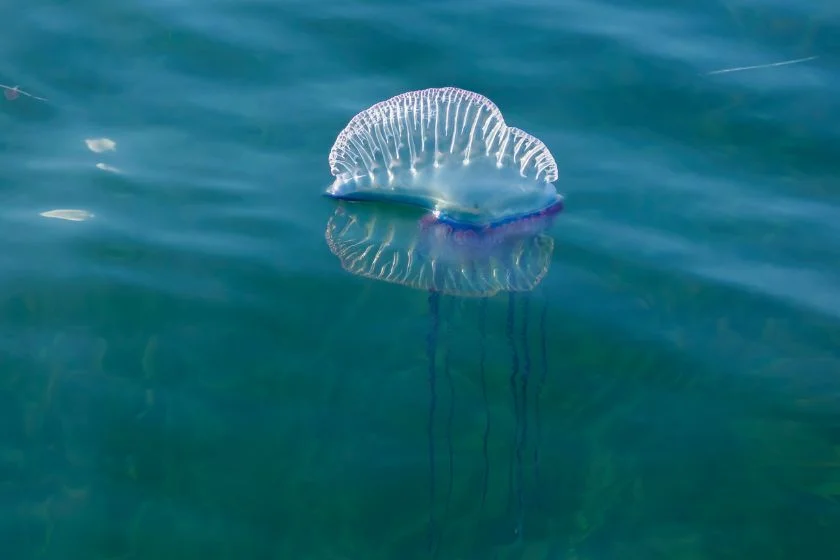
- Scientific name: Physalia physalis
- Classification: Hydrozoa
- Habitat: Sandy sea beds
- Diet: Carnivore
- Conservation status: Least concern
The name was inspired by the triangular-shaped air-filled bags of the warships used in the 15th century.
As transparent as a Jellyfish, this creature is often mistaken to be a Jellyfish. It is a colony of medusoids and polyps charged with respective duties.
Victims stung by the Portuguese Man O’ War are advised to remove the tentacles carefully without touching them and wash the stung area with seawater to neutralize the poison.
The NHS says that pain generally lasts for around 15-20 minutes.
So if you experience such pain symptoms or the affected area becomes infected, you must seek medical care immediately.
9. Jellyfish
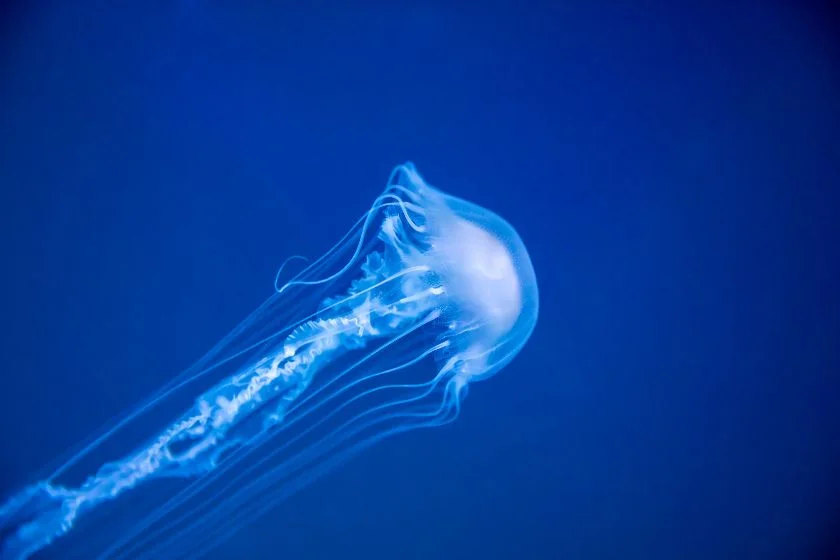
- Scientific name: Scyphozoa
- Classification: Hydrozoa
- Habitat: Oceans, tropical waters
- Diet: Carnivore
- Conservation: Least concern
Many jellyfishes are native to Britain, and a few visit the shores of the UK from time to time.
However, none should be underestimated as almost all jellyfishes have well-developed cells in their tentacles that deliver darts soaked in venom.
Cyanea capilata, commonly known as the lion mane jellyfish, is the largest jellyfish with tentacles measuring up to 40metres in length.
This jellyfish can impair respiratory and heart functions with a sting.
A terrifying fact about this animal is that the sting cells remain active long after the fish must have died and washed up on shore.
So, if you find one of them lying dead on the beach shore, don’t touch it!
10. Australian Redback Spider
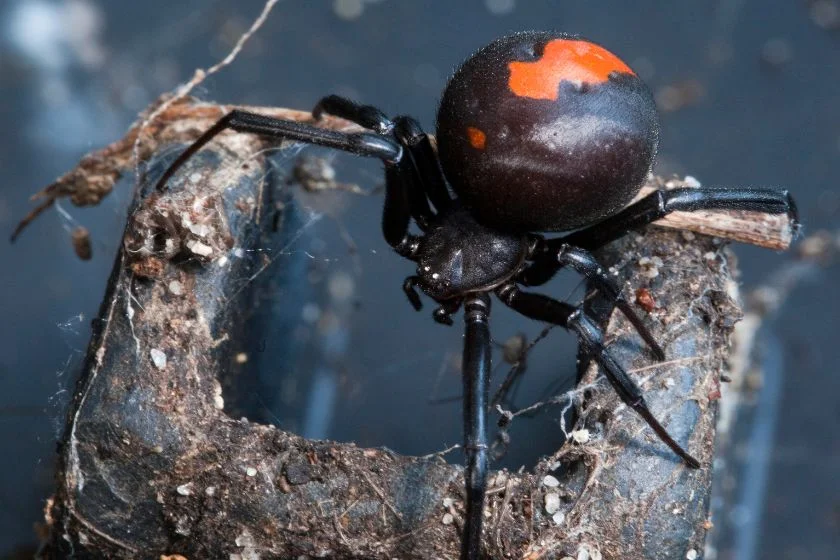
- Scientific name: Latrodectus hasselti
- Classification: Arachnid
- Habitat: Forests, desert, firewood piles, shrubs, sheds
- Diet: Carnivore
- Conservation: Not evaluated
The Australian redback spider is a spider originally from Australia but can presently be found in other regions outside Australia.
This creature has recently been sighted in Scotland, Wales, and the Midlands. There is suspicion that their arrival in the UK may be from holidaymakers’ luggage.
The Australian redback spider can bite humans just like recluse spiders.
Its venom is neurotoxic and causes intense pain in humans the same way venoms of other Latrodectus spiders do.
If the bite is not treated, it could cause swellings and respiratory problems. Such untreated bites could even cause death in rare cases.
11. Stingray
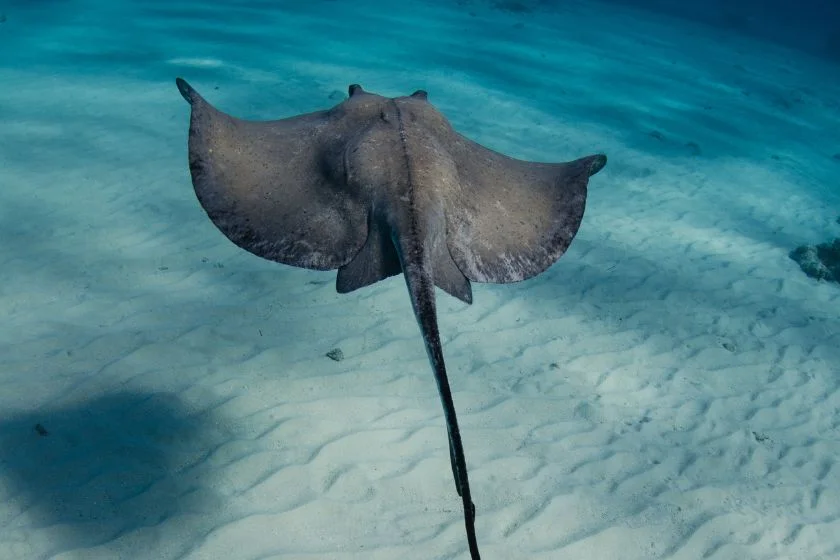
- Scientific name: Myliobatoidei
- Classification: Cartilaginous
- Habitat: Shallow coastal waters
- Diet: Carnivore
- Conservation status: Least concern
When the stingray’s stinger pierces the human skin, there is bound to be pain caused by the physical damage to the skin.
Also, venom injection from the stinger can cause wound inflammation, leading to severe symptoms such as headache, dizziness, and diarrhea.
In rare cases, complications in body parts may necessitate amputation if necessary. Additional complications may arise if the stinger or fragments break inside the victim’s skin, requiring emergency medical surgery for removal.
Although the stingray only attacks in self-defense, there have been several reports of incidents.
A British fisherman was hospitalized after he hooked a stingray with his fishing rod, and the fish lashed out at his arm with its stinger, piercing and lacerating a vein.
Another notable incident, a fatality this time, although it didn’t happen in the UK, is that of renowned Australian conservationist Steve Irwin, who got killed in Batt Reef, Australia, by a stingray barb through his heart in 2006.
12. Sea Urchin
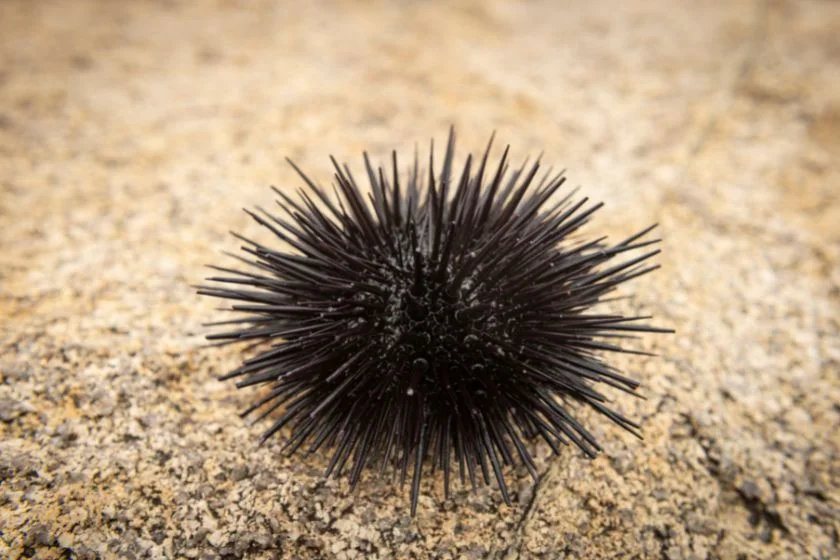
- Scientific name: Echinoidea
- Classification: Echinoderm
- Habitat: Ocean
- Diet: Omnivores
- Conservation status: Not extinct
Over 900 species of these tiny creatures live under the seabed and rocks worldwide, and the United Kingdom is no exception.
They have protruding spines, which can cause puncture wounds.
According to the NHS, puncture wounds by sea urchins are treated similarly to that of Weever fish stings.
If there are signs that you or anyone you know has had a severe allergic reaction (anaphylaxis), please dial 999 for immediate medical assistance.
13. Tick

- Scientific name: Ixodida
- Classification: Arachnida
- Habitat: Tall grass, woods, underground cover plants
- Diet: Blood
- Conservation status: Least concern
When it comes to identifying the deadliest of animals in the world, it is usually the tiny invertebrates that claim the title.
Perhaps their inconspicuous nature makes people consider them less of a threat, and this ignorance has proved costly over the years.
Ticks are invertebrates that feed on the blood of mammals, reptiles, and birds and can transfer disease between hosts.
For humans, the most serious is Lyme disease which can also be difficult to detect.
In the UK, about 1472 cases of Lyme disease were detected in 2009, with an additional 2000 assumed to have gone unnoticed due to difficulty in diagnosing the deadly disease.
Lyme disease can be so dangerous that, if left untreated can cause permanent disability.
UK wildlife Safety Precautions
Tourism can be a good recreational activity, especially for those who love to observe wildlife.
Still, without drawn-out safety precautions to follow while doing this, even the tourism business may be affected because people will hardly want to visit a place if they feel that visiting it may bring unpleasant memories.
It is why some of the safety precautions have been drawn below for you to follow to observe the wildlife in the UK safely.
Do not touch wild animals
Wild animals are not pets, so it’s best not to assume that about them and keep a respectful distance.
No matter how cute some of them may appear, some animals are edgy and stressed.
They may attack you if you come close to them, and even a scratch from the smallest of animals can cause an infection that can bring you immense agony.
Do not try to feed wild animals
As much as it can be tempting to feed a cute fluffy squirrel by throwing nuts at it, it’s not a healthy practice.
Some animals can get too comfortable and begin to relate to you with food, which means they see food whenever they see you.
Frequently, some animals, such as bears, have to be killed yearly for safety reasons because the animal became too comfortable with humans and assumed them to be food. So allow the experts to do the feeding.
Don’t be noisy
Noise can get the animals stressed and make them react in a way that you least expect.
Understandably, you may feel the urge to want to scream excitedly when you finally get to see that animal you’ve been reading about or seeing on YouTube, but noise can get you the opposite result you least expect.
Also, avoid honking your car if an animal is crossing the road.
Watch your steps and where you place your hands and also wear appropriate footwear
As you walk, observe the environment around you, and don’t get distracted by just taking pictures.
Mind where you place your hands and feet, even in the sand, as it may be home to a hidden animal.
And also, make sure you have the appropriate boots on and wear pants, not shorts, to protect your skin from dangerous insect bites.
Get a good zoom lens
Most tourists often come close to wildlife when observing them to take a good photo, which is not a good idea.
So it is highly recommended that you invest in a good lens to enable you to take good photographs from a safe distance.
Frequently Asked Questions
Which animal is the deadliest in the UK?
When discussing the most dangerous animals in the UK or anywhere, the deer may not come to mind.
Still, according to statistics, these creatures cause around 40,000 accidents annually in the UK, with an average of 20 deaths.
What snake is the deadliest in the UK?
The most venomous snake in the UK is the Adder, found in Scotland, Wales, and England.
Although, the good news is that its venom is quite mild compared to other species of viper, and fatality incidents are comparatively rare, with the last death from Adder attacks dating back to 1975.
The unfortunate news is that it can induce severe swelling of the affected area, necrosis of the flesh, and great pain. On some occasions, amputation of the limp is required.
Are there crocodiles in the UK?
No, there are no native or wild species of crocodiles living in the UK. However, NHS statistics have revealed that at least seven people were hospitalized as a result of croc and alligator attacks in England in 2018.
Conclusion
While you’ve been educated on some of the deadliest animals in the UK, it is important to remind you that the goal is not to frighten you but provide you with information so that you can make educated decisions on how best to protect yourself.
Wildlife is an integral part of our ecosystem, and the goal of wildlife conservation is not just to protect these species but also to educate people on how to peacefully coexist with other species.
Next Up…
Discover the most dangerous animals in Europe:
